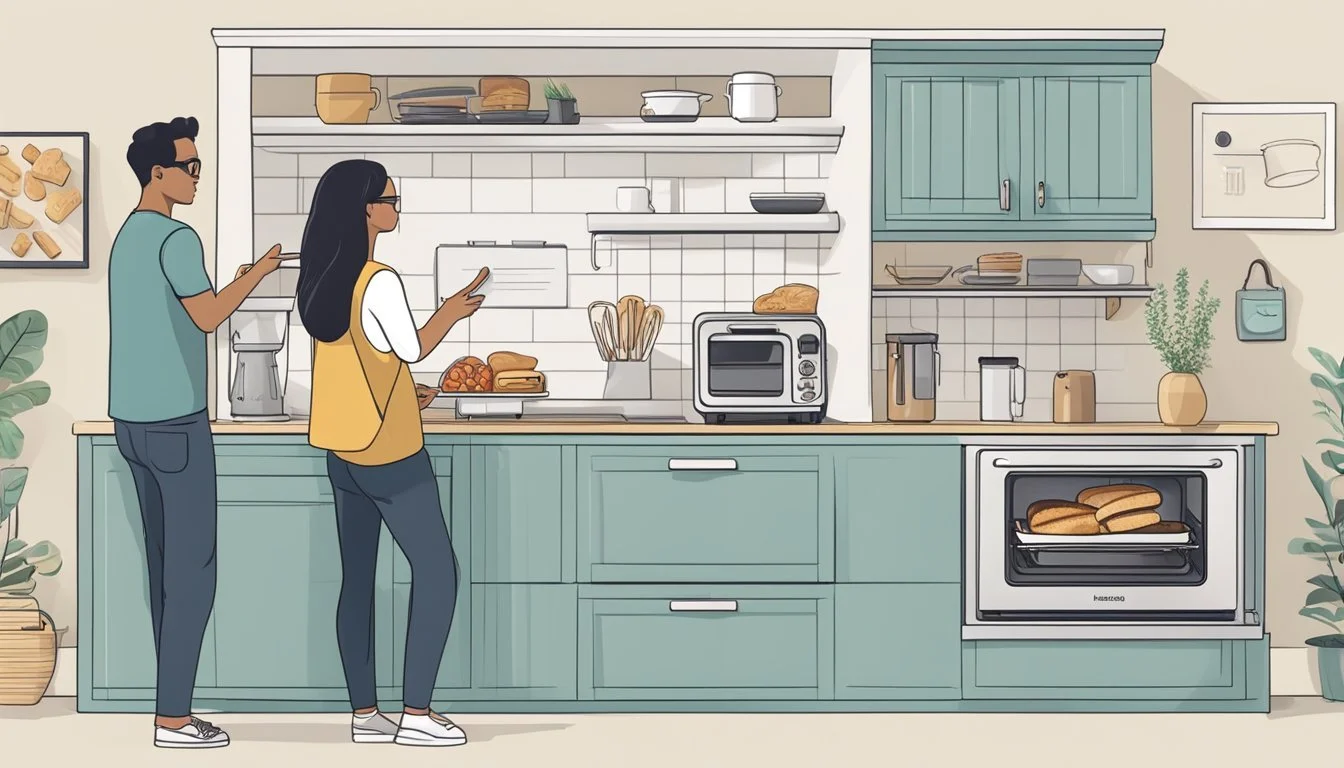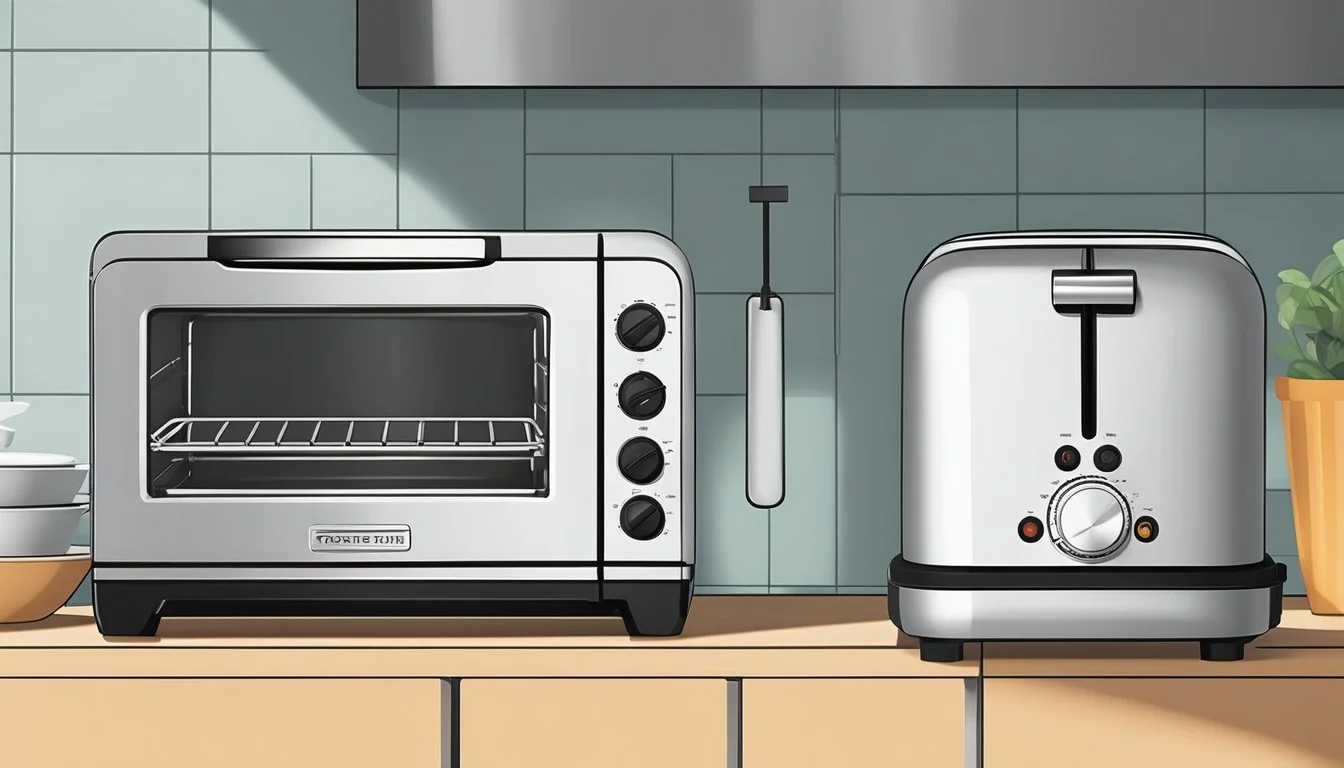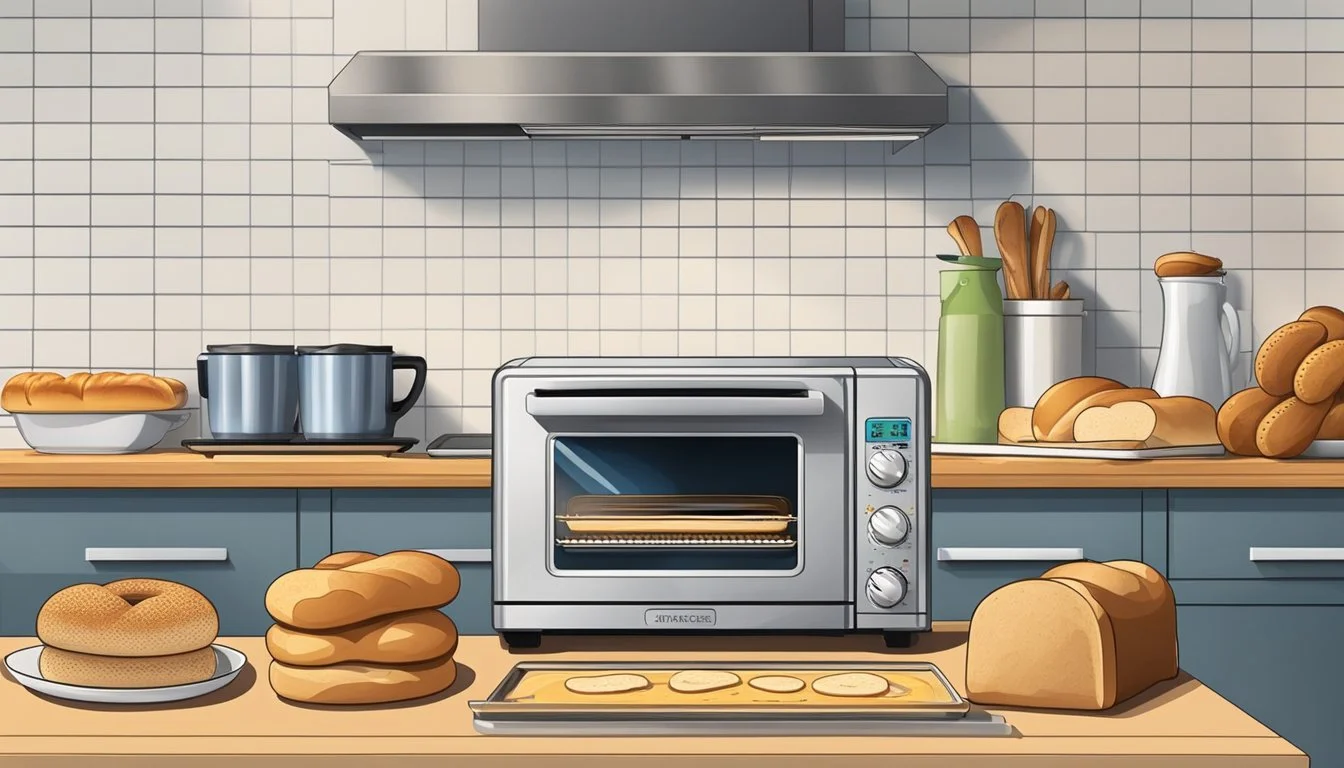How to Choose the Best Toaster or Toaster Oven
Finding Your Perfect Kitchen Match
Selecting the best appliance for toasting can enhance both the functionality and efficiency of any kitchen. Toasters and toaster ovens fulfill similar yet distinct roles. On one hand, toasters offer a quick and focused way to brown bread (how long does bread last?) and bagels (how long do bagels last?) with their vertical slots and straightforward settings. Their compact nature allows for efficient use of counter space, an important consideration in smaller kitchens.
Toaster ovens, in contrast, provide a versatile alternative, capable of not only toasting bread but also baking, broiling, and even air frying in some models. They usually require more counter space due to their larger size but make up for it with their multifunctional capabilities. The choice between the two appliances hinges on the user's cooking habits, kitchen space, and the variety of functions they require.
When determining which is best suited for one's needs, it is crucial to consider factors such as design, usability, size, and budget. Toaster ovens tend to have a range of settings, including adjustable temperature controls and timers, which can aid in achieving the perfect crispness for a variety of dishes. Traditional toasters, while generally less versatile, often win on speed and simplicity, making them ideal for those who want their toasted items quickly and with minimal fuss.
Understanding Toaster and Toaster Oven Basics
When selecting a kitchen appliance for toasting bread and other foods, consumers face a choice between two main types: the toaster and the toaster oven. Understanding the core functionalities and physical characteristics of these devices is crucial for making an informed decision.
A toaster is generally more compact and specifically designed for toasting slices of bread. Its simplicity and small footprint make it ideal for kitchens limited in counter space.
Toaster ovens, in contrast, boast larger sizes and capacity, which is advantageous for cooking a variety of foods beyond just toasting. They are versatile; capable of baking, broiling, and even air frying in some models. This versatility, however, means a toaster oven will occupy more countertop real estate.
Feature Toaster Toaster Oven Size Compact, minimal counter space. Larger, requires more counter space. Capacity 2-4 slices, designed for toasting. Larger, can cook a range of foods. Versatility Limited to toasting. Bake, broil, toast, and more.
In terms of design, toasters typically offer a straightforward approach featuring slots for bread, a lever mechanism, and a few settings for desired doneness. Toaster ovens, however, present more complex controls that regulate temperature, cooking mode, and time.
Choosing between a toaster and a toaster oven ultimately depends on the user's space availability, cooking needs, and preference for either a dedicated toasting device or a multifunctional cooking appliance.
Evaluating Your Kitchen Needs
When selecting a toaster or toaster oven, one must weigh kitchen limitations against their culinary preferences. Efficient use of space and tailored appliance capabilities are paramount.
Assessing Kitchen Space and Capacity
Counter Space: To ascertain whether a standard toaster or a toaster oven is better for a kitchen, one must first evaluate counter space. A traditional toaster typically occupies less room than a toaster oven, thus may be ideal for kitchens with limited counter space.
Toaster: Less than 20 inches of width, suitable for narrow areas.
Toaster Oven: Requires broader space, averaging between 15 to 24 inches in width.
Capacity: Depending on the need to serve multiple people or handle various toasting tasks, capacity should guide the choice.
Single or two-person households: A small toaster with a 2-slice capacity is often sufficient.
Larger households or entertaining: A toaster oven with a larger capacity, capable of accommodating up to 9 slices of toast, may be necessary to meet the increased demand.
Considering Your Cooking Habits
Cooking Tasks: The decision between a toaster and a toaster oven also hinges on the intended cooking tasks. Whereas a toaster is specifically designed for breads and bagels, a toaster oven offers a broader range of cooking options, such as baking, reheating, and broiling.
Toaster: Best for quick and consistent toasting.
Toaster Oven: Versatile, with the capability to replace several kitchen appliances.
Cooking Options: For those who require a more multifunctional device, toaster ovens often come with various settings and features, from basic toasting to complex baking and roasting.
Simple needs: A traditional toaster may suffice for routine toasting.
Complex needs: A toaster oven presents more options, accommodating an array of cooking techniques beyond toasting, making it suitable for users who enjoy experimenting with recipes.
In making an informed decision, individuals must reflect on their space constraints and cooking requirements to select a toaster or toaster oven that best aligns with their kitchen's functionality and their culinary aspirations.
Comparing Types and Features
When choosing between a toaster and a toaster oven, consumers must consider their kitchen space, budget, and cooking needs. Each appliance offers distinct features catering to different preferences for toasting and cooking functions.
Toasters vs. Toaster Ovens
Toasters are typically designed to toast slices of bread with varying levels of browning. They are compact, making efficient use of counter space. On the other hand, toaster ovens are more versatile, allowing users to bake, roast, and air fry in addition to toasting. Their larger size means they take up more space, so they are better suited for those with sufficient kitchen area.
Key Features of Toasters
Slot Size: Wide slots accommodate thicker bread and bagels.
Browning Controls: Multiple settings ensure a consistent level of toasting.
Materials: Stainless steel exteriors are common for durability and ease of cleaning.
Functionality: Some toasters offer specific functions such as reheating or defrosting.
Key Features of Toaster Ovens
Cooking Functions: They often include capabilities to bake, roast, and even air fry besides toasting.
Convection Fan: Enhances even cooking and reduced cooking times.
Racks and Trays: Multiple wire racks and a crumb tray for easy cleaning are standard.
Size and Capacity: They range in size to accommodate different amounts of food, from small snacks to entire meals.
Considering Technical Specifications
When selecting the best toaster or toaster oven, it's crucial to examine the technical specs. These details directly impact the appliance's performance, from the amount of food it can accommodate to the precision of temperature settings.
Size and Volume
Toaster and toaster oven sizes are measured in liters for volume or by the number of slices of bread they can toast at once. Consumers should consider the counter space available and the volume of food they plan to cook. For example, certain toaster ovens can fit a 6-quart Dutch oven or nine slices of toast, making them suitable for larger meals.
Temperature Controls and Timing
The range and accuracy of temperature controls are pivotal for cooking versatility. Most high-end toaster ovens offer a temperature range up to 1,800 watts and include presets for bake, broil, air fry, and toast. Precise timers ensure that food is cooked for the correct duration, aiding in consistent results every time.
Advanced Digital Controls
Toaster ovens with advanced digital controls provide an intuitive user experience. Features often include LCD displays, pre-programmed settings, and touchpad interfaces. Digital controls can offer enhanced precision with temperature and timing adjustments, contributing to ease of use and reliability in cooking.
These specifications must be evaluated to ensure they align with the user's cooking needs and preferences.
Decoding the Importance of Design and Style
When selecting a toaster or toaster oven, the design and style play a significant role beyond mere aesthetics. It reflects the kitchen's personality and complements the overall look and feel. Sleek and modern styles with stainless steel finishes offer a timeless appeal, fitting seamlessly into a variety of kitchen decors. They represent durability and are often favored for their ease of cleaning.
On the other hand, retro designs with bold colors can serve as statement pieces, injecting personality into the kitchen space. These models often inspire nostalgia and become conversation starters. But design choices aren't solely about appearance; they must also align with practicality. Ergonomic features, such as intuitive control panels and easy-to-access doors, enhance the user experience.
Here are some design elements to consider:
Size & Countertop Footprint: The appliance should fit comfortably in the available space, taking into account both function and form.
Material Quality: High-quality materials not only look better but also contribute to the appliance's longevity.
Control Panel Design: Should be user-friendly and easily accessible.
Color & Finish: Should complement other kitchen appliances and fit the kitchen's color scheme.
Incorporating the kitchen's design and style when choosing a toaster or toaster oven ensures that the appliance serves as both a functional kitchen aid and an integral part of the kitchen's visual appeal.
Analyzing Cooking and Baking Performance
Choosing the best toaster or toaster oven relies heavily on analyzing cooking and baking performance. Consumers should seek out models demonstrating consistent even cooking and browning, versatility in cooking options, and specialized features for baking and roasting that produce superior results for a variety of foods.
Even Cooking and Browning
An ideal toaster or toaster oven should deliver uniform heat distribution, ensuring that toast comes out evenly browned and baked goods are cooked consistently throughout. Consumer tests suggest that some models have cold spots or may overcook certain areas. It's essential to look for units with proven track records of even cooking and browning, often indicated by a heat map test, which illustrates how an appliance cooks various foods across its surface.
Multi-functionality in Cooking
The multitasking kitchen appliances stand out for their ability to handle various cooking methods beyond toasting. These functions may include:
Toasting: Precision browning settings for bread and bagels.
Baking: Ability to bake cookies and other baked goods evenly.
Broiling: Intense top heat for crisping and melting.
Roasting: Uniform cooking for meat and vegetables.
Convection Cooking: An internal fan to circulate hot air for quicker and more even baking and roasting.
A valuable toaster oven should offer seamless switching between these functions and maintain consistent performance across them.
Specialized Features for Baking and Roasting
For those keen on baking and roasting, looking for specialized features that enhance these cooking methods is key. These can include advanced functions like precise temperature control, convection settings for more even heat distribution, and specific modes tailored for baking or roasting. Accessories like additional racks or baking pans can also significantly affect the quality and ease of baking or roasting in a toaster oven.
Exploring the Convenience of Use
Choosing the best toaster or toaster oven isn't just about toasting performance; it's also important to consider how easy the appliance is to use daily, with regards to cleaning and maintaining it over time.
Ease of Cleaning
Toasters and toaster ovens should streamline kitchen tasks, not add to the cleanup. A removable crumb tray is almost a necessity for quick tidying. This feature allows users to dispose of crumbs efficiently, preventing them from accumulating on the bottom. For toaster ovens, non-stick interiors and removable racks are advantageous, as they support wipe-downs and washing without the need for excessive scrubbing.
Maintenance and Durability
Long-term satisfaction with a toaster or toaster oven hinges on how well it withstands regular use. Appliances with stainless steel construction or durable materials resist wear and complement an easy-to-clean design. Some manufacturers enhance the lifespan of their products with replaceable parts, such as heating elements, ensuring the unit remains functional and dependable for years. Consumers should prioritize models with solid build quality to mitigate the frequency and costs associated with maintenance.
Investigating Add-on Capabilities and Accessories
When choosing a toaster or toaster oven, it's important to consider the available add-on capabilities and accessories that can enhance functionality. These features can vary widely, and they significantly impact a user's cooking experience.
Toaster Ovens:
Convection: Many toaster ovens incorporate convection capabilities, which use a fan to circulate hot air around the food, resulting in faster and more even cooking.
Air Frying: A growing number of toaster ovens now offer air frying features. They come equipped with specific air fryer baskets or trays, allowing users to cook with less oil for a healthier option.
Accessories:
Racks: Adjustable racks are crucial for various cooking needs, from toasting bread to roasting a chicken. Extra racks can also increase cooking space.
Breville Smart Oven Air Fryer Pro: Known for its versatility, it includes accessories that accommodate different dishes, fitting a 6-quart Dutch oven without a lid or a 5.5-quart Le Creuset Dutch oven with a lid.
Users should assess whether the included accessories, like baking pans or pizza stones, match their cooking preferences. For instance, those who enjoy home-baked pizza would benefit from a toaster oven with a dedicated pizza stone.
In summary, investigating a toaster oven's supplementary capabilities and the range of accompanying accessories is essential for finding a unit that aligns with one’s cooking routines and aspirations. Whether one needs a simple toasting appliance or a full-fledged air fryer toaster oven, the add-ons can make a significant difference in cooking versatility and convenience.
Understanding the Value of Size Adjustability
When selecting a toaster or toaster oven, size and adjustability are pivotal aspects that can significantly impact kitchen efficiency and suitability for individual needs. A buyer must consider not only the amount of available counter space but also the appliance's capacity to meet the daily requirements of their household.
Compact toaster ovens are generally suitable for individuals or couples, offering space for quick meals and snacks. They usually accommodate one rack and can handle items akin to a mini toaster oven. However, they are size-limited and may not be ideal for families or entertaining.
For larger households, full-size ovens come with an increased capacity which can be vital for cooking more substantial meals. These ovens often feature multiple racks, providing flexibility and the ability to cook several items simultaneously. Nevertheless, the trade-off is a larger footprint in the kitchen.
Size adjustability in a toaster oven usually refers to:
The number of racks
The presence of adjustable rack positions
The interior dimensions allowing for a range of cooking tasks
Capacity Rack Options Ideal For Small Single 1-2 people Medium Multiple Small families, couples Large Multiple Large families, Entertainers
Consumers must acknowledge that with increased size and adjustability comes a larger appliance that may not always fit snugly on limited counter space. Thus, it's recommended that potential buyers measure their kitchen space and weigh that against how much they intend to use a toaster oven.
Analyzing Popular Models and Brands
When it comes to selecting the best toaster or toaster oven, consumers should consider brands that consistently receive high marks for quality and performance. Some of the most well-regarded brands in this space include Breville, Cuisinart, Hamilton Beach, and Black+Decker. Below, we dissect the offerings from each of these brands to aid in your decision-making process.
Breville's Range of Options
Breville is known for its high-end kitchen appliances, and its toaster ovens are no exception. The Breville Smart Oven Air Convection is an 1800-watt powerhouse with precise temperature control and multiple rack positions, making it a top pick for consumers. For those looking for a versatile appliance, the Breville Joule Oven Air Fryer Pro offers an array of functions, including air frying and convection baking.
Models of Interest:
Breville Smart Oven Air Convection
Breville Joule Oven Air Fryer Pro
Options from Cuisinart
Cuisinart has a reputation for creating durable and sleek kitchen appliances that cater to various budgets. Their toaster ovens often boast both beauty and functionality. Consumers should seek out Cuisinart models that strike a balance between size, features, and price to find the best overall choice for their needs.
Highlighted Model:
Cuisinart Chef's Convection Toaster Oven
Choices from Hamilton Beach
Hamilton Beach offers a range of toaster and toaster oven options that are affordable without compromising on quality. These models are designed to be user-friendly, often incorporating features that provide consistent toasting and baking results.
Budget-Friendly Picks:
Hamilton Beach Easy Reach Oven with Convection
Hamilton Beach 4-Slice Toaster Oven
Affordable Picks from Black+Decker
Black+Decker caters to the budget-conscious consumer with its line of toaster ovens, including the 4-slice versions which can accommodate a family's needs without taking up excess counter space. Durability and simple functionality are hallmarks of these cost-effective models, making them a strong contender for the best value choice.
Highlighted Product:
Black+Decker 4-Slice Toaster Oven
Considering Price and Value for Money
When selecting the best toaster or toaster oven, consumers must consider price alongside value for money. Affordable options often appeal to budget-conscious buyers, but the initial savings might not always equate to the best value over time. Higher-priced models may include advanced features, delivering superior performance or versatility that can justify the cost.
For best value, buyers should seek a balance between performance and cost. Toaster ovens vary in price, with some models like the Hamilton Beach Sure-Crisp Toaster Oven Air Fryer Combo being a more budget-friendly pick at $59.99, offering functionality at a reasonable price.
Here is a brief comparison to assist consumers:
Affordable Range: Basic functionality, may toast unevenly or have minimal settings. Suitable for simple toasting needs.
Mid-Range: Better build quality, may include additional features such as a timer or variable browning settings.
High-End: Premium materials and features, potentially including convection and air frying capabilities, offering a versatile cooking experience.
When evaluating best toaster ovens and best air fryer toaster oven options, consumers should not only look at the sticker price but also consider durability, energy efficiency, and whether a model's features will be utilized.
Price Category Expected Features Considerations Budget Basic toasting, single function Lower durability, limited versatility Mid-Range Extra features, improved consistency Balances cost with added functions Premium Multi-function, high-quality materials Long-term value, potential to replace appliances
Ultimately, the best choice is one that aligns with the consumer's needs and expectations while offering the best combination of price and utility.
Additional Functionalities and Uses
In the modern kitchen, toasters and toaster ovens are not limited to just browning bread. These appliances come equipped with various functionalities that cater to a range of cooking techniques, from air frying to slow cooking.
Air Frying and Convection Baking
Air Fryers and toaster ovens with air frying capabilities use rapid air circulation to cook food with less oil, offering a healthier alternative to deep frying. It results in crispy exteriors while keeping interiors moist. Convection Baking similarly uses a fan to circulate hot air inside the oven, enabling quick and even baking. Convection ovens are adept at roasting and can reduce cooking times.
Air Fry: Crispy texture with less oil
Convection Bake: Even heat distribution, faster cooking
Defrosting and Reheating Choices
Many toaster ovens come with a Defrost function, which is specifically designed to gently thaw frozen foods without cooking them. This feature can be quite beneficial for meal prep or when you're short on time. The Reheating option ensures leftovers are warmed evenly, preserving flavor and texture without overcooking or drying out.
Defrost: Thaw frozen food
Reheat: Warm leftovers evenly
Dehydrating and Slow Cooking Options
Some advanced models offer a Dehydrating function, allowing you to dry out foods for preservation or to create snacks like fruit leather. Slow Cooking is another feature that transforms your toaster oven into a mini oven, suitable for prolonged cooking at low temperatures, ideal for tenderizing tough cuts of meat and developing rich flavors over time.
Dehydrate: Preserve food, create snacks
Slow Cook: Tenderizes meat, enhances flavor through long, low-temperature cooking
Choosing the Right Toaster or Toaster Oven
When selecting the best toaster or toaster oven, one must evaluate their kitchen needs in terms of space, versatility, and the types of food they plan to prepare.
Making the Final Decision
Essential factors in making a final decision include countertop space, utility, and budget. One must consider:
Size: A toaster is generally smaller and suitable for kitchens with limited counter space.
Versatility: Toaster ovens offer a range of cooking methods such as baking, roasting, and broiling, going beyond simple toast preparation.
Cost: Prices can vary widely. The buyer should determine how much they are willing to invest in the appliance.
Taking into Account the Manufacturer's Reputation
A manufacturer's reputation for quality and customer service is crucial. Potential buyers should:
Research customer reviews and product ratings.
Consider the longevity and reliability of the brand.
Look into the warranty and customer support options.
Understanding the manufacturer's standing in the market can guide one to a dependable and satisfactory purchase.








